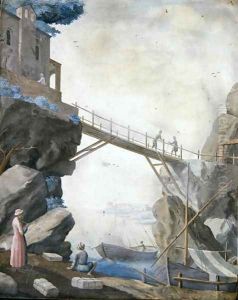Ferdinand Enrico Hugford Paintings
Ferdinand Enrico Hugford, also known as Ferdinando Enrico Hugford, was a multifaceted artist born in 1703 in Florence, Italy, to English parents. He was active in various artistic realms, including painting, engraving, and printmaking. Hugford's career unfolded during the 18th century, which was a period characterized by the Baroque and the early stages of the Rococo movements, known for their ornate and decorative qualities.
Hugford received his early training in art within Florence, a city with a rich cultural heritage and a vibrant artistic scene. During this time, Florence was a hub for Grand Tourists, and as such, it provided Hugford with the opportunity to interact with a variety of artists, patrons, and intellectuals. He was particularly influenced by the works of the Medici court artists, which is evident in the classical themes and elaborate style found in his own work.
Although not as widely known as his contemporaries, Hugford's contribution to the arts was significant, especially in the context of printmaking. He was a part of the transition from the Baroque to Rococo styles, and his works often showcased a blend of these aesthetics with a particular emphasis on elegance and grace. Hugford was also recognized for his skills in the reproduction of paintings, where he meticulously translated the works of other artists into engravings, thus contributing to the dissemination of artistic styles and ideas.
Despite his English heritage, Hugford spent most of his life in Italy, where he left a modest legacy. He died in 1771 in Florence. While his works may not be as celebrated as those of the major artists of his time, Hugford's artistic endeavors provide insight into the practices and stylistic developments of the 18th-century European art world.
